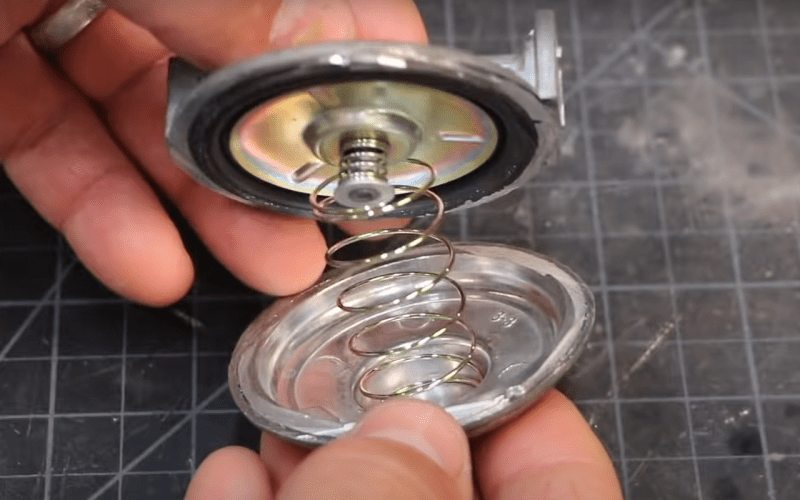We’re surrounded by interesting engineering, but some of it is sealed inside a housing, away from easy inspection. A case in point; the humble gas regulator. It’s in equipment all around us, from a propane grill to welding gear. It’s a sealed unit — have you ever seen the inside, to know how it really works? Well thanks to [FarmCraft101], we get to do just that, in the video after the break.
To let the cat out of the bag, it’s essentially a hydraulic lever. A large diaphragm is pressurized by the low pressure side of the regulator, and is held back by a spring. When the pressure compared to ambient atmosphere is high enough to overcome the spring tension, the lever is tilted, closing the high pressure valve. Hence, pressure is determined by spring strength. We also get a look at how the system can fail — in this case it seemed to be some grit interfering with the valve. We find hidden engineering to be supremely satisfying, particularly when we get to understand it so clearly as we do here. Enjoy!

















A good analogy would be a one sided balance beam type scale. One where you put what you are measuring on one side and the counter weights on the other side. But in this case ‘one side’ is the regulated gas pressure, the other side is the spring tension and the balance point is the diaphragm and needle valve. And when in balance, the needle valve is closed.
The greatest failure point is the diaphragm, not the needle valve. There’s almost always enough pressure drop across the needle valve to blow out any trash that may appear at the valve.
In my dealing with these types of valves it is almost always the spring that is the mode of failure this explains why you have a reduced flow rate even the smallest diaphragm leak would result in no flow and as you mentioned the 200psi is usually plenty the clear the orifice
Baring contamination they’re also durable. Ours going on several decades.
Well that’s at least a couple of decades out of date, since the rubber in the Diaphragm is only given a 7 to 10 year life. Take a look at the back side of a package for a regulator. They’re only certified for much less time than yours has been in use.
Some may use a piston, and even diaphragm doesn’t always mean “rubber”.
https://www.beswick.com/resources/the-basics-of-pressure-regulators/
In central North Carolina our winters are pretty moderate. The regulator for our downstairs gas pack heating is outdoors and will stop working if freezing rain collects on it. I have to go pour hot water on the regulator a few times a year to get the diaphragm (heating) to work again.
The valve with the ball near the end of the video is not a check valve. It restricts the flow if there is no back pressure on the low side. The restricted flow lets pressure build up slowly on the low side. Once the low side pressure has built up enough, the ball moves out of the way, and the flow is unrestricted, allowing normal use. If the low pressure system to which the regulator is connected ever has a significant leak, the low side pressure is lost, and the flow is restricted. This is a safety system to reduce gas escaping in case of a system leak.
This is correct it function is similar to proportioning valve on car if a brake line or in this case gas line is cut the ball stops the flow of propane for obvious reasons if you have ever used a large propane torch you’ve probably experienced that ball being a pia if you don’t open valve slowly ..
The ball bearing is to prevent fire to reach the gas cylinder in case of a back fire.